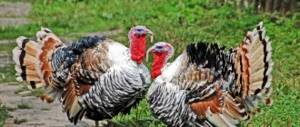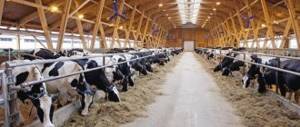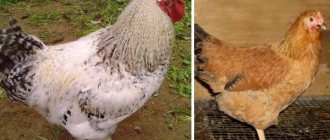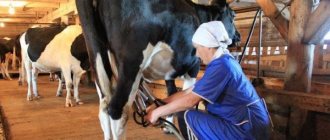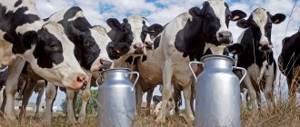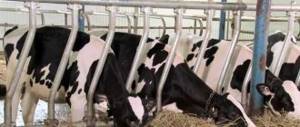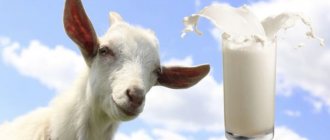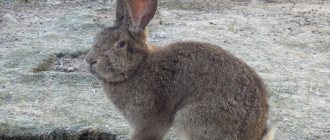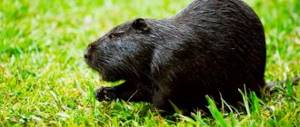Today, various areas of livestock farming are becoming increasingly popular among novice entrepreneurs. Breeding cows at home as a business deserves special attention, because high-quality beef and dairy products are always in demand on the market. But, like any other type of business, such an endeavor requires certain initial investments and the development of a detailed business plan. It will allow you to judge the profitability of the enterprise and help you find suitable development paths.
Cows in the pasture
Business Features
Business with cows is almost always profitable. But even at the initial stages of developing a business plan, you should clearly define for yourself the specialization of the livestock farm. The main directions in this regard include two:
- Breeding cows for meat.
- Dairy farming.
As additional income, you can also sell young animals or sell manure to fields. The skins of killed animals are also in demand in the production of leather products.
Attention! Their choice is based not only on personal preferences, but also on analysis of the sales market. So, if there are dairy factories near the farm, it is more profitable to implement the second direction. If there is a meat processing plant that is ready to purchase large quantities of beef, breeding for meat is more preferable.
Other features of the region are also taken into account. If it is not rich in pastures, and renting land is too expensive, the profitability of such a business drops significantly, which does not always suit the breeder. The profitability of the enterprise is also influenced by the presence of other similar points near the opening farm. If there are already a couple of large farms in the region with a similar focus, the new business may not be able to withstand the competition.
How to write a business plan?
To clearly see the construction of a business on cows and milk, calculate all expected costs, calculate future profits, provide for investments, predict the return on investment of the farm, draw up a business plan. It is necessary, first of all, for the farmer to properly organize his business. If there is a need to take out a loan from a bank, the credit institution will ask you to present the business plan of the enterprise. What is reflected in the document?
Section 1 is the introduction. The name of the enterprise, address, tax identification number, statistics codes, bank account number through which all commercial transactions are carried out are indicated. Here are the registration numbers of the Pension Fund, Social Insurance Fund, and TFOMS (medical fund number). The characteristics of the farm are briefly described: production and sale of milk, breeding and sale of milk-producing calves.
Section 2 – production plan. The section reflects all the expenses that the farmer will make:
- renting a plot of land or purchasing land as a property to build a barn;
- rental of pastures and grounds for summer animal camps;
- expenses for a barn: premises, equipment, automation. How much money will be spent on arranging closed boxes for cows, on a heating system, supplying electricity, organizing feeding and watering;
- The farm must have a separate room for machine milking. There will be a room for washing animals, disinfecting the udder, hooves and belly;
- sanitary standards provide for a separate room for calving;
- equipment for boxes for sick animals;
- shower rooms for cows, if there is a need to wash them;
- purchase of heifers or dairy cows;
- provide for the number and cost of milking machines;
- purchase of bull calves;
- feed reserves: hay, silage, concentrates, fertilizers, vitamin supplements, salt, pulp;
- purchasing containers for storing milk;
- refrigerators for milk and meat;
- personnel costs. Experts recommend hiring 1 specialist for every 10 head of cattle;
- expenses for medicines and veterinarian.
More on the topic: Is it profitable to raise bulls for meat?
All indicators are recorded in numbers. A general calculation is made so that the farmer can see the total costs of the enterprise.
Section 3 is economic indicators. It reflects the projected profit:
- For clarity, make a table. Monthly income from milk is listed: liters, cost, revenue;
- the same table is made for the sale of meat;
- if the farmer plans to sell young animals, then calculations are made for this type of activity.
All income from the farm is calculated. The farmer clearly sees the profit from a certain number of cows and bulls. Separate records are kept for each cow of how much milk it produces per day. The seasonality of milk production is taken into account. Cows reduce their milk supply during the winter.
Section 4 – analytical. The farmer analyzes the calculations and calculates the monthly and annual profit or loss. If the finances spent on organizing the business were personal, then the farmer analyzes when this enterprise will pay off. 3 years is considered a good indicator.
Section 5 – investment. It is necessary for a credit institution to take out a loan. The farmer requests a certain loan amount from the bank and makes a technical justification for it. It indicates what he wants to spend the money on, what profit he will receive by putting it into circulation. Which buyer enterprises does the farmer work with? For how long can he take out a loan?
Igor Nikolaev
auto RU
Banks usually require a separate technical justification. It makes a projected calculation of profit. In a business plan, the investment section is needed only for the farmer. He sees how much money he lacks for effective activities.
Paperwork
Cow breeding as a business requires mandatory registration. Most often, farm owners register as private entrepreneurs. Moreover, when choosing, you should pay attention specifically to registration with the code “livestock breeding”. It involves significantly lower taxes, which is more preferable for beginning breeders.
In the future, if there are several co-founders in the business, the cattle breeding enterprise can also be registered as a peasant farm. With this form of doing business, certain tax benefits are provided, and government assistance is also provided.
Important formalities: what you can’t do without.
The opening of such a complex requires registration of an individual entrepreneur (OKVED code 01.2 - livestock farming). The simplified taxation system is also perfect for work - 6% tax on gross income. Having created an enterprise, you should immediately think about its future consumers, as well as competitors. The complex should be immediately located so that there are no similar producers of meat or dairy products, peasant farms or personal subsidiary plots, or large complexes in which cow breeding is the main activity nearby. The next step is selecting sales points and concluding agreements with clients. They may be:
- retail outlets in nearby settlements
- large markets
- small reseller organizations that buy products in bulk
Finding a suitable site
One of the key points of successful cow breeding as a business is the availability of an optimal land plot. When choosing it, they are guided by how many heads of cattle the breeder plans to purchase. The calculation of the total area is based on the area required for the productive maintenance of one animal.
cow pasture
So, to feed one head you need land:
- with perennial plants - at least 0.5 hectares;
- with annual crops - about 0.25 hectares;
- with cereals - at least 0.6-0.7 ha.
When independently sowing a plot separately, it is also necessary to take into account the area for planting root crops.
In the case of grazing animals on natural pastures, at least 1 hectare of area is allocated per head. Another 1 hectare is allocated for the preparation of hay for feeding this cow in the winter. If the specified area standards are neglected, there will be a shortage of free space on the farm, dirt and manure will accumulate faster, and there will not be enough food for normal growth of the livestock. The result is frequent illness and death of livestock.
Important! After selecting a site with a suitable area, it is inspected for its plant composition. If necessary, all debris, pipe fragments, and snags on which animals can be injured are removed from the site.
How to start a business?
If the activity began with a household, then the entrepreneur has already taken into account all the advantages and difficulties of the business. When expanding the farm, it is necessary to pay attention to the following issues that will certainly confront the farmer:
It is necessary to analyze the dairy market, study milk prices, directions for the sale of calves and cows in the region and beyond. Don't just consider nearby businesses. It is necessary to study areas in which livestock farming is underdeveloped. There, for sure, dairy and meat products are required.
How many individuals need to be purchased? To obtain milk, dairy cattle breeds are purchased. For the meat business, bulls are used for fattening. There is no need to rush into making a choice. It is necessary to assess the climatic conditions of the region. Not all cows tolerate heat and cold equally. Some animals require high humidity, while others do not require it.
White cattle breeds are most often used for meat production. They are hardy and have good immunity. Red, motley, black and white animals have milk productivity or milk and meat production. Individually suitable for each breed. The quality of meat and fat content of milk vary. Experts recommend purchasing individuals from local factories or farms in nearby regions. Animals will not have to adapt to new climatic conditions.
Cows must be properly maintained and optimal care conditions provided for them. It is recommended to consider the seasonal management of cows during the warm and cold periods of the year. If the paddock will be open in the summer and spring, and it is planned to make it on pastures, then an agreement is reached with the local authorities on renting the required area of meadow land. There should be at least 0.5 hectares per individual. The open camp should not be located far from the pasture.
More on the topic: Description of the milking machine for cows “Farmer”
For the winter, cows are kept in stalls or kept in closed pens. The optimal room temperature should not be below +10 degrees. Usually the walls and roof of a barn are insulated, but in cold regions with harsh winters, it is necessary to install a heating system in them.
For the proper maintenance of dairy cows, a certain diet is built. One individual should eat up to 6 kg of succulent feed, 12 kg of silage, and 2 kg of dry feed per day. They are thinking about the location of the silo, storage areas for dry feed and hay. It is recommended to build a farm near vegetable farms in order to save money on the supply of vegetables.
If the cattle population is more than 10 heads, then it will be difficult for one farmer to cope with them. They hire working personnel who monitor the cleanliness of the premises, milk the cows, and control the operation of all automatic devices on the farm. A veterinarian monitors the health of the animals. This may be a staff member or an invited specialist from a veterinary clinic. An agreement is concluded with him, which prescribes all preventive measures for the health of animals.
We also need to worry about sales markets. Milk is a perishable product. It will not be able to stay in the refrigerator for a long time without heat treatment. Milk sales should be daily. They think about the transportation of products: delivery routes and mode of transport.
Construction of a barn and arrangement of a farm
After choosing a site, the stage of its development follows. The most favorable option for a novice farmer would be to select an area with already rebuilt but abandoned cowsheds. In financial terms, renovating buildings will cost much less than building from scratch. In addition, the second option also requires obtaining the appropriate permit and approval of the project.
The area of the barn is selected taking into account the size of the livestock. On average, 10 heads require a room with dimensions of 34x6 m. When using the stall method of keeping livestock, the area of each stall is at least 2 square meters. m.
When developing a barn project, it should include:
- the presence of an inclined floor in each stall, which will greatly simplify cleaning;
- insulation of walls in regions with extremely cold winters;
- covering all cracks that cause drafts;
- availability of high-quality ventilation;
- sufficiently wide passages and entrance doors to prevent injuries during the movement of the herd.
Automatic feeding systems
After constructing buildings, experienced farmers recommend immediately connecting a water line to them and placing automatic feed distribution systems inside. Such equipment involves certain costs, but greatly simplifies the care of animals. You should also provide in advance convenient feeders and drinkers, which are placed in each stall.
Creation of a farm: sales of products
Thus, organizing a cattle breeding enterprise is quite difficult. This is also a relatively expensive matter. But nowadays it’s even more difficult to find sales markets. The cost of milk and meat given in the article above is retail. If the farm is designed for only 10 animals, perhaps its owner will be able to find direct markets. When expanding an enterprise with retail sales, certain difficulties may arise. The owner of a large farm will most likely have to sell products in bulk to enterprises of the appropriate specialization. In this case, the price per liter of milk or kilogram of meat will be much lower. When calculating possible profits, this must be taken into account.
Purchase of young animals
They buy livestock exclusively from large, proven farms. Moreover, when selling, the breeder is obliged to provide all the necessary documents for the animals, certificates of veterinary examination and the origin of the livestock. It is also recommended to take an experienced veterinarian with you to inspect the livestock. It will help to timely identify and cull individuals with obvious signs of disease.
Even before purchasing, it is important to know which animals are needed. As a rule, beginning breeders purchase their first livestock to produce milk. A healthy dairy cow is distinguished by the following characteristic features:
- rather weak muscle development;
- saggy belly;
- well-developed udder with a minimum amount of hair on it;
- more rounded sides, thanks to which the body resembles a barrel;
- thin horns;
- elongated head.
It is recommended to purchase dairy cattle at the age of 2 years. It is then that the animal begins to produce high milk yields, which will make it possible to make a profit already at the beginning of the farm’s operation. In addition, a dairy cow can be milked on the spot, having decided on the size of the one-time milk yield. In a high-quality dairy cow, after this the udder is greatly reduced and several deep wrinkles appear on it.
Raising cows for meat offers greater profits than raising dairy cows. But it is much more difficult for a beginner to implement it. Representatives of beef cattle breeds are distinguished from other varieties by the following body features:
- large dimensions and weight;
- developed muscles;
- more massive neck;
- short, downed head;
- toned stomach;
- flat sides.
After purchase, young animals of such breeds should gain weight much faster than calves of the same age, but dairy breed.
Description
Cattle breeding for the production and sale of meat and milk is carried out mainly in rural areas, where there is enough space to keep large animals. Without minimal knowledge and skills in working in agriculture, it is risky to take on such a business, because if you make a small mistake in nutrition or care, you can lose the entire livestock.
Experts estimate the profitability of the business at approximately 50% with a payback period of 1.5-2 years. Consumer demand for meat and dairy products is always high, but the farmer may have problems selling it at the desired price. Local producers compete with imported goods from other regions and abroad.
You can download a ready-made business plan for cattle breeding using the link.
Cow nutrition
The specific composition of the diet and feeding standards largely depend on the chosen direction of raising livestock, the specific conditions of the region, and the time of year. These points are especially critical when breeding beef breeds of cows.
Fresh greens in the pasture
The main food for living creatures in the presence of vast rich pastures is fresh greens in the summer. In winter, the animal is fed mainly with hay. Up to 7 tons of such food should be stored per individual for the winter.
When kept in stalls, it is recommended to feed livestock with special baits, which are prepared from the following components:
- high-quality combined food;
- flax seeds;
- hay.
When mixed, this food promotes weight gain in animals and proper development. But when feeding cows with hay all year round, its annual supply should be increased to 25 tons per head.
The diet of cows also includes silage, root crops, and grain feed.
Features of livestock breeding
To minimize the risks when raising and keeping cows, the breeder must study in detail the features of breeding such animals. Without proper feeding of cattle, it is unlikely that a farmer will be able to achieve high productivity indicators. And without them, the profit from such activities is reduced significantly.
Fattening
When breeding cows, an important point is to provide them with the proper diet. A suitable option for feeding calves is selected based on their breed and the purpose of the herd.
On meat breeding farms, as a rule, two types of fattening are practiced:
- Grain. The diet of cows includes high-calorie grain feed from wheat, corn, and oats. This approach to feeding contributes to rapid weight gain and the appearance of marbling in meat.
- Herbal. With this feeding, the basis of the animal’s menu is grass and hay. The beef becomes lean, but contains a large amount of vitamins.
The second option is especially popular with breeders who have extensive pastures at their disposal.
For dairy-producing cattle, the diet should be more varied. In addition to grass from pastures, the following is also used in feeding calves of these breeds:
- fodder beet;
- grain and products of its processing;
- combined feeds.
Their use allows you to increase the cow's weight gain and achieve high productivity indicators.
Slaughter
If the purpose of the farm is to raise cattle, then it would be useful to equip your own slaughterhouse on the territory. In this case, it is necessary to allocate a separate room in which the slaughter line and refrigeration rooms are located. If there are also livestock farms in the neighborhood, you can save a lot by equipping a common slaughterhouse.
Calves of beef breeds are slaughtered when they are 14–16 months old. At the same time, it is implemented manually or using special equipment.
Farm staff
If you have ten heads of livestock on the farm, you can easily take care of them yourself. But as the population grows, it will be necessary to hire additional workers. Moreover, the standard staff of a large farm includes the following vacancies:
- one or more milkmaids (depending on the size of the herd and the availability of milking equipment);
- workers who clean stalls and prepare feed;
- vet;
- accountant;
- technologist.
Many large farmers also include a manager on their staff who organizes the operation of the farm and looks for new areas for marketing products.
Dairy cow breeds
Despite all the difficulties described above, dairy farming continues to be an interesting area for business, especially for small and medium-sized ones. The key difference between mini-farms and large livestock complexes is their flexibility and easy adaptability to current circumstances. If all large livestock centers are like two peas in a pod, since they are made according to the same patterns, then the family farming business always adapts to local conditions, which is why two mini-farms will always be very different.
For example, if a farm has only two to three dozen cows, it is not necessary to keep them in a pen all year round. If there are free, unoccupied meadows in the area (something, but there is enough space in Russia for everyone), in the warm season the animals can be kept free grazing. And this is just one of many ways to reduce costs and speed up the return on investment.
However, in any case, breeding cows for milk as a business will be successful only if you breed highly productive purebred animals from the very beginning. Fortunately, for small farms it is possible to purchase a batch of such cows even at domestic breeding plants.
Today, the following breeds are most popular among professional farmers:
- Black-and-white cow. The most common breed in our country, it accounts for about half of the total domestic dairy cattle population. The average annual milk yield, depending on the intensity of feeding, is 5500-8500 kg per year.
- Holstein cow. A relatively new breed, developed in North America in the 1970s and 80s. In one milk yield, a cow of this breed produces 30 kg of milk. In Russian conditions, the average annual milk yield is about 7400 kg per year.
- Kholmogory cow. An old Russian breed, capable of producing up to 8,000 kg of milk per year if properly fed. However, in most cases, milk yield varies between 4000-6000 kg.
- Yaroslavl cow. Another traditional Russian breed. The average annual productivity is 3500-6000 kg, but the officially registered record is 11590 kg.
Financial plan
Before purchasing livestock and erecting buildings, it is necessary to calculate in detail the costs and profits of such activities, followed by determining the profitability of the enterprise. Opening your own cattle farm involves spending money on the following items:
- preparation of all necessary documentation;
- buying or renting a plot;
- construction or repair of barns and other buildings;
- purchase of necessary equipment;
- acquisition of young animals (to begin with, it is recommended to take no more than 10 animals);
- salaries for staff;
- purchasing a year's supply of feed;
- payment for veterinary services if the specialist is not on the staff;
- payment of business tax;
- a certain reserve of funds for unforeseen related expenses.
Reference. Prices for each item are dictated by the specific region in which the project is being implemented. Therefore, they should be found out as accurately as possible at the stage of drawing up a business plan. On average, opening a farm will cost an entrepreneur 3–3.5 million rubles.
Business profitability
When breeding cows for milk, on average, one cow will produce up to 6 thousand liters per year. With a minimum wholesale cost of 20 rubles per year, one animal will bring up to 120 thousand rubles. If there are 8 cows in the herd (as a rule, two sires are also taken into the herd), then you can earn about 1 million rubles from them. If we add to this the options for retail trade, the sale of beef and manure, then the total annual income will be 1.2–1.3 million rubles. Thus, the enterprise will pay for itself in 2–2.5 years.
Cow breeding today is an extremely promising niche of entrepreneurial activity. The demand for meat and dairy products from these animals is always high, and the state supports livestock breeding activities with benefits for renting pastures and in terms of taxation. Therefore, large financial investments in such a project pay for themselves within a couple of years and begin to bring net profit to the owner.
Economic calculations
Investments in a mini-farm for raising cattle consist of:
| № | expenditures | Amount, rub. |
| 1 | Registering a business and obtaining permits | 50 000 |
| 2 | Territory rental, 2 months | 150 000 |
| 3 | Equipment of the barn and utility rooms | 200 000 |
| 4 | Purchase of equipment and equipment | 1 000 000 |
| 5 | Purchase of a herd, 20 heads | 450 000 |
| 6 | Purchase of feed for the year | 600 000 |
| 7 | Workers' salaries, 2 months | 80 000 |
| 8 | other expenses | 100 000 |
| Total | 2 630 000 | |
The largest component of start-up costs is the automation of the feeding process, the purchase of a tractor and a car. It can be made cheaper if, before the profit arrives, you set the feed manually, rent a tractor, and buy a used car.
Monthly farm expenses are:
| № | expenditures | Amount, rub. |
| 1 | Rental payments | 75 000 |
| 2 | Public utilities | 10 000 |
| 3 | Salary to employees | 40 000 |
| 4 | Veterinarian services | 5 000 |
| 5 | Fare | 10 000 |
| 6 | other expenses | 20 000 |
| Total | 160 000 | |
Additional costs may arise for repairing equipment, attracting livestock specialists, replenishing livestock and feed supplies. The annual cost of the farm will be about 2 million rubles.
The farm receives its main income from the sale of milk and meat. Moreover, milk is sold every day, and meat products will be available a year after the start of the project. Six cows with an average milk yield of 20 liters per day give an annual milk yield of 32,400 liters. (2 months for calving are excluded from the calculation and 2 months of 10 liters each will be spent on feeding calves). With a yield of 70%, bulls will produce about 350 kg of beef per head, a total of 4,900 kg from the herd.
Prices for both milk and meat vary greatly in different regions. Let’s say that dairy products are purchased wholesale for 40 rubles/kg, retail for 50 rubles/kg; Meat products at wholesale cost 300 rubles/kg, at retail 400 rubles/kg. Products are sold to intermediaries and end consumers in equal proportions. Then the annual farm income is:
| № | Products | Wholesale, rub. | Retail, rub. | Total, rub. |
| 1 | Milk | 648 000 | 810 000 | 1 458 000 |
| 2 | Beef | 735 000 | 980 000 | 1 715 000 |
| Total | 1 383 000 | 1 790 000 | 3 173 000 | |
The business pays off on average in 18-24 months, and profitability is at the level of 55%. For agriculture, this is a profitable area of capital investment.
Video: breeding cattle for meat and dairy production.
